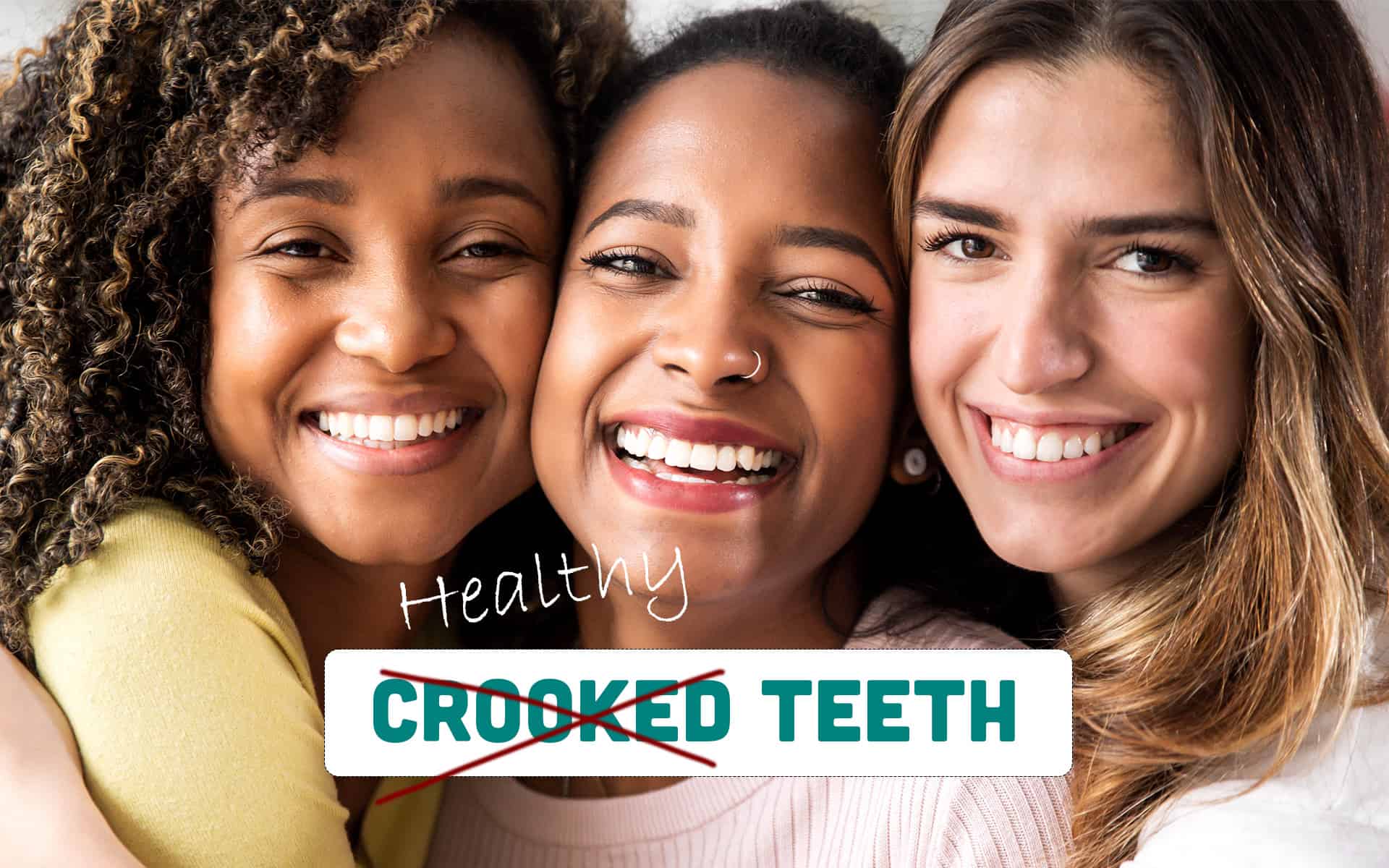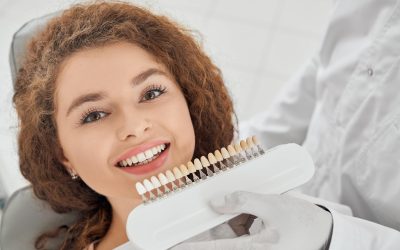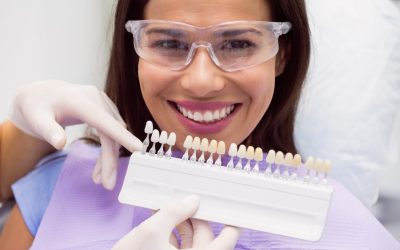Crooked teeth, also known as malocclusion, are a common dental issue that affects many people. This condition occurs when the teeth do not align properly, resulting in an uneven bite. Crooked teeth can have a significant impact on your day-to-day life and other activities. Beyond the obvious physical effects on your appearance and ability to chew and speak properly, crooked teeth can also affect your self-esteem and confidence. Many people with crooked teeth feel self-conscious about their smile and may avoid social situations or hide their teeth when they speak or smile. In addition, crooked teeth can lead to dental problems such as tooth decay and gum disease if not properly treated, which can cause pain, discomfort, and even more serious health issues.
Before you can begin to address crooked teeth, it’s important to understand the condition and its underlying causes. By doing so, you can make an informed decision about the best course of treatment for your individual needs. Today we’ll explore the causes, symptoms, and treatment options for crooked teeth so that you can better understand this common dental issue and how to address it. By taking the time to learn more about crooked teeth, you can take the first step towards a healthier, straighter smile.
What are Crooked Teeth?
Crooked teeth refer to teeth that are not properly aligned. This dental condition can range from mild to severe and can cause a wide range of problems, including difficulty chewing, speech problems, and self-consciousness about your smile. Here are some signs that you may have crooked teeth:
Overcrowding:
If your teeth are crowded and don’t have enough space to fit properly, this can cause them to overlap or twist.
Uneven spacing:
Gaps or spaces between teeth can be a sign of crooked teeth.
Crossbite:
When the upper teeth do not align properly with the lower teeth when biting down, this can cause discomfort and affect your ability to chew properly.
Overbite:
If your upper teeth overlap your lower teeth too much, this can cause your lower jaw to recede, leading to dental problems and even temporomandibular joint (TMJ) disorder.
Underbite:
An underbite is the opposite of an overbite, in which the lower teeth protrude past the upper teeth. This can also cause problems with chewing and speaking.
If you experience any of these symptoms, it’s important to see a dentist or orthodontist for a proper diagnosis and to discuss potential treatment options.
Causes of Crooked Teeth
There are several reasons why someone may develop crooked teeth. Some of the most common causes include:
Genetics:
Genetics is one of the primary causes of crooked teeth. If your parents had crooked teeth, you are more likely to develop them as well.
Injury:
Trauma to the teeth or jaw can cause teeth to become crooked or misaligned.
Poor oral habits:
Poor oral habits such as thumb-sucking, mouth breathing, and tongue thrusting can contribute to the development of crooked teeth.
Crowding:
When there is not enough room in the jaw for all of the teeth, they can become overcrowded and crooked.
What are the symptoms of Crooked Teeth?
Crooked teeth can cause a range of symptoms, including:
Difficulty chewing:
When teeth are misaligned, it can be difficult to chew properly.
Speech problems:
Crooked teeth can also affect speech, causing a lisp or difficulty pronouncing certain words.
Discomfort:
Misaligned teeth can cause discomfort and pain in the jaw, neck, and face.
Self-consciousness:
Many people with crooked teeth feel self-conscious about their smile, which can lead to poor self-esteem.
Effects of Crooked Teeth on Oral Health
Crooked teeth can also have a negative impact on oral health. When teeth are not properly aligned, they can be more difficult to clean, increasing the risk of tooth decay and gum disease. In addition, misaligned teeth can cause abnormal wear on the teeth, leading to a range of dental problems. Here are some issues one might face:
Difficulty brushing and flossing:
When teeth are not properly aligned, it can be difficult to clean them effectively. This can lead to a buildup of plaque and bacteria, which can cause tooth decay, gum disease, and bad breath.
Increased risk of tooth decay and gum disease:
Crooked teeth can create hard-to-reach areas where plaque and bacteria can accumulate, increasing the risk of cavities and gum disease.
Temporomandibular joint (TMJ) disorder:
Crooked teeth can cause problems with the alignment of your jaw, leading to TMJ disorder, which can cause pain and discomfort in the jaw, neck, and shoulders.
Speech problems:
Crooked teeth can affect the way you speak, causing lisping, slurring, or difficulty pronouncing certain sounds.
Self-esteem and confidence issues:
Many people with crooked teeth feel self-conscious about their smile, which can affect their confidence and overall well-being.
Headaches and jaw pain:
When your teeth are misaligned, it can put extra stress on your jaw and cause headaches and jaw pain.
How to get treatment for Crooked Teeth?
There are several treatment options available for crooked teeth, including:
Dental braces:
Braces are one of the most common treatments for crooked teeth. They work by applying pressure to the teeth to move them into the correct position.
Invisalign:
Invisalign is a newer option for treating crooked teeth. It involves wearing a series of clear, removable aligners that gradually shift the teeth into the correct position.
Orthodontic treatment:
Orthodontic treatment involves using appliances such as braces or Invisalign to straighten the teeth and improve the bite.
Cost of Crooked Teeth Treatment
The cost of crooked teeth treatment can vary depending on the severity of your condition and the type of treatment you choose. While the initial cost may seem daunting, investing in treatment for crooked teeth can have significant long-term benefits for your oral health and overall well-being.
Some treatment options for crooked teeth include:
Dental braces:
Braces are a common and effective way to treat crooked teeth. The cost of braces can vary depending on the type of braces you choose, such as traditional metal braces, clear ceramic braces, or lingual braces, which are placed on the back of your teeth.
Invisalign:
Invisalign is a clear, removable aligner system that can gradually straighten your teeth over time. While Invisalign may be more expensive than traditional braces, many people find the convenience and discreetness of Invisalign to be well worth the cost.
Retainers:
Retainers are custom-made devices that are worn after braces or other orthodontic treatment to maintain the position of your teeth. The cost of retainers can vary depending on the type of retainer and the length of time it needs to be worn.
Dental surgery:
In severe cases, dental surgery may be necessary to correct crooked teeth or other orthodontic issues. The cost of dental surgery can vary depending on the type of surgery and the complexity of the procedure.
It’s important to keep in mind that the cost of crooked teeth treatment is an investment in your oral health and overall well-being. In addition to the physical benefits of straighter teeth, treatment can also boost your self-esteem and confidence, allowing you to enjoy social and professional situations with greater ease.
Many dental practices like ours offer financing options and payment plans to make treatment more affordable and accessible. So, don’t let cost hold you back from achieving the straighter, healthier smile you deserve. Speak to your dentist or orthodontist about your treatment options and any financing options that may be available to you.




